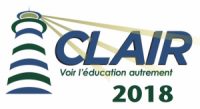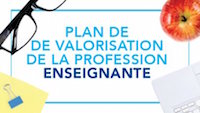A unique assembly of publication tools
designed to support learning and assist teaching
SUMMARY
This text is an introduction to a set of specially-designed tools for fifth and sixth grade teachers and students (11 and 12 years of age) enrolled in the CAREER program at the Institut St-Joseph de Quebec. It is addressed to readers who are unfamiliar with the world of computers and the Internet. More detailed or technical documents are available upon request.
At the Institut St-Joseph, weblogs enable students to publish daily records on the Web of what they have learned, make it easier than ever before for teachers to guide students, foster the participation of resource persons in classroom activities and provide parents with access to continuous updates about their child’s experience at school.
This digital portfolio initiative is particularly in line with the school reform process as it promotes authentic writing situations, reflective analysis, the development of learning communities, and a high level of independence among students in terms of new information and communication technology.
CONTEXT
The evolution of the Internet in recent years has resulted in a striking number of editorial tools that allow anyone to publish on the Web, without requiring extensive technical knowledge. The weblog is doubtless the best illustration of this popular trend towards personal publication on the Internet. A weblog is a Web site where an author publishes personal writings that are generally brief and presented in reverse chronological order (from most recent to least recent). Readers are then asked to submit their comments. As weblog-related software usually provides the author with free access to what other webloggers are writing on similar topics, it becomes a very dynamic form of publication, placing the author at the centre of a vast network making interaction easy, and highly stimulating!
Some weblogs authors adopt a journalistic tone, reporting information of public interest or commenting on political, athletic, cultural, or other current events. Others adopt the tone of a personal diary, recording their day-to-day experiences and actions in the style of a novel that unfolds daily as lived by the author. Others devote their publication space to personal reflections, which due to their public exposure, allows them to benefit from the feedback or complementary writings of fellow webloggers with common interests.
This latter approach to weblogs, which has recently been adapted in the field of continuing education, university research, as well as ³knowledge management² (a very popular trend in the business world), also provides the underpinnings for ³a personal reflection space open to the world² – the weblogging project at the Institut St-Joseph.
DESCRIPTION
The school administration’s objective with this weblog initiative was to offer students and teachers a support tool to promote reflective analysis and the emergence of a learning community that goes beyond the school walls. Attaining this objective would require a research tool that notably helps students document learning activities and thereby enhance their reflective abilities as they record the results of their efforts.
Thus, the first version of the weblogs is a publication space comprised of three weblogs for each students and teacher, a console that allows teachers to easily interact with students and a set of specially-designed teaching tools to facilitate interventions with students.
A publication space
The publication space is a virtual extension of the classroom. Accessible to students, this space is essentially comprised of three zones – each of which is actually a weblog.
The first zone is basically the classroom Web site, where messages of public interest are displayed, work is posted and the life of the learning community is documented. It is a collective, public space where all students and teachers may read and write. As this zone is not protected by a password, it is accessible to other classrooms, schools, which makes it conducive to many potential telecollaborations.
The second zone is where students communicate with their teacher, make comments, solicit special assistance, exchange files and where all individual teacher-to-student communication is posted. This personal, private space is reserved strictly for teacher-to-student educational guidance and is protected by a password known only to the student, his teacher and his parents, who may enter comments at any time in this zone.
The third zone, which is personal and public, is designated for the student’s personal Web page that may feature discussions on any topic ranging from Star Academie to their passion for dogs or stamp collecting.
In concrete terms, this means that within the context of daily activities at school, students who use weblogs are prompted to record notes related to tasks to be accomplished (goals, methods, etc.), obstacles encountered, ideas introduced to him, potentially useful documents, etc. According to whether the notes are personal, concern the entire classroom, or of a playful nature, they can be published in one of the three zones. Depending on the chosen zone, his notes may be completed by another student or teacher, or receive feedback from parents and other visitors to the school weblogs (some zones are public, while others are private and protected by a password).
Teachers’ notices will be posted either in a student’s personal zone or the group’s collective zone, according to whether they address an individual student or the entire group.
It’s easy, fast… and more efficient than e-mail !
A classroom console
So many publication locations could make it very difficult for teachers to supervise all texts written by the students in a single day. It would be unthinkable to expect teachers to regularly sift through all the personal and collective Web pages of every student. Fortunately, the dynamic weblogs make it possible to compile in a console the updated information of each zone.
Thus, each zone’s update can be displayed on the teacher’s monitor as it is entered. This basically means that each time a student publishes a text, all teachers concerned are notified by means of a system that is as simple as it is easy to use. With a single click, each text can be read and annotated.
It almost has to be seen to be believed.
Teaching support tools
All this would not be complete without a more or less interactive tool kit, designed to facilitate educational guidance in the different writing zones of the students’ weblog.
Based on teaching tools developed by teachers in past years to facilitate portfolio development, this kit allows, by clicking on a few buttons, to transmit to the students an activity the results of which were saved to complete the weblog of each student. Some of these tools will notably allow the CAREER program teacher to track how the students feel about their computer throughout the year – allowing them to intervene when necessary, for example.
INNOVATION
By choosing the weblog rather than a more traditional approach where communication and file exchanges between the members of a learning community rely on e-mail, the Institut St-Joseph approach is innovative in many respects.
€ As is the case with logs, of which weblogs are the direct descendants, all notes are recorded in databases that enable easy document searches weeks, months or even years after their publication, which offers unprecedented possibilities in terms of reflective analysis and student evaluation.
€ Weblogs also facilitate communication with parents. In fact, a console similar to that of the teachers will allow interested parents to receive systematic updates from the weblogs of the school principal, the teachers, the classroom Web page and each of their child’s writing zones. In this way, the parents will have access through a single window to their child’s basic everyday life at school.
€ The fact that Web publication by the students is integrated into the daily classroom experience and that one portion of the weblogs is public will also foster regular intervention of resource persons in the classroom. Mechanisms for this purpose, which are not described in this document, have been anticipated.
€ Moreover, while not specifically described, the school’s teachers will also have a personal weblog as well as a virtual teachers’ room, specially designed to promote reflective analysis and a network culture that will enrich professional development.
€ One noteworthy point is that weblog technology requirements are flexible and inexpensive. As the school is not dependent on a single type of technology there is no concern about inflated costs associated with exaggerated fluctuations in the price of ³licences.² In fact, for this reason, the students’ weblog records can easily be continued from year to year, even beyond their time at the Institut.
By using the weblogs with their students as of this year, the teachers and the administration at the Institut St-Joseph firmly believe they will have reached an important milestone in taking a more human, as opposed to technical, approach to e-learning.
For more details, or a demonstration contact:
Mario Asselin, Principal, Institut St-Joseph
direction@inst.st-joseph.qc.ca | 418-527-1072
Clement Laberge, directeur veille and strategie, iXmedia
claberge@ixmedia.com | 418-653-7919
TECHNICAL ANNOTATION
On a technical note, the weblogs are based on an assembly of Movable Type weblogs installed on a Linux server and completed by a certain number of mySQL data bases that allow the creation of each student’s spaces, and management of files resulting from the use of teaching tools. The teacher’s console relies on an xml agregation feed generated by Movable Type. The software program chosen for this agregation is NetNewsWire Lite (available free-of-charge from www.ranchero.com). These xml feed are also available for subscription (sometimes accessible by password) by parents, eventual resources persons, other classrooms or schools in the context of possible telecollaboration projects.





DIgital Portfolio Initiative at the Institut St-Joseph
Mario Asselin , Principal of the Institut St-Joseph, begins an innovative program that revolves around cyber-education and weblogs, « a visionary tool to facilitate learning ».
Institut St. Joseph Launches Innovative Program
The Institut St.
Deploying weblogs in fifth and sixth grade – an experiment in Quebec
Should have blogged this long ago – better late than never…